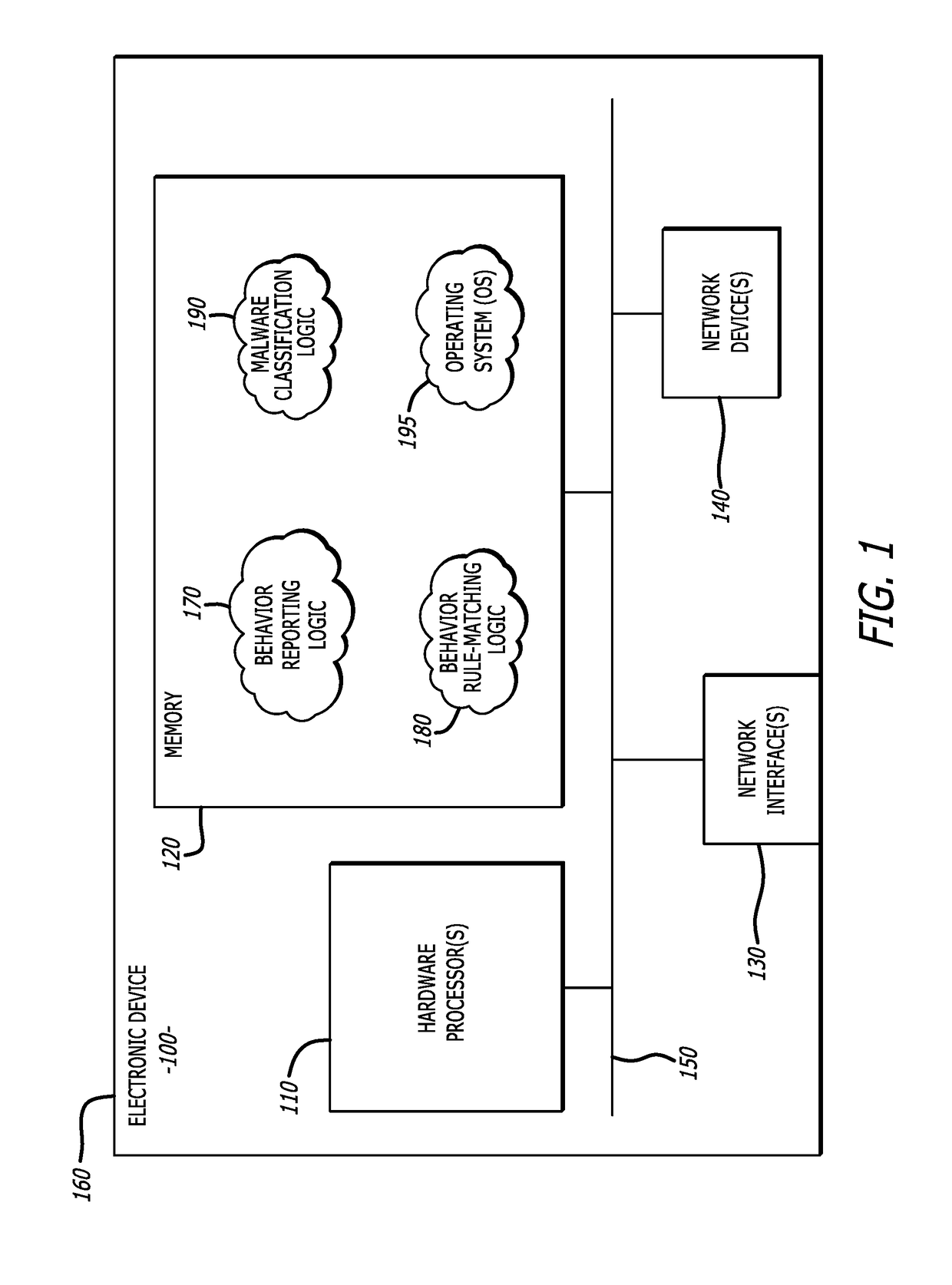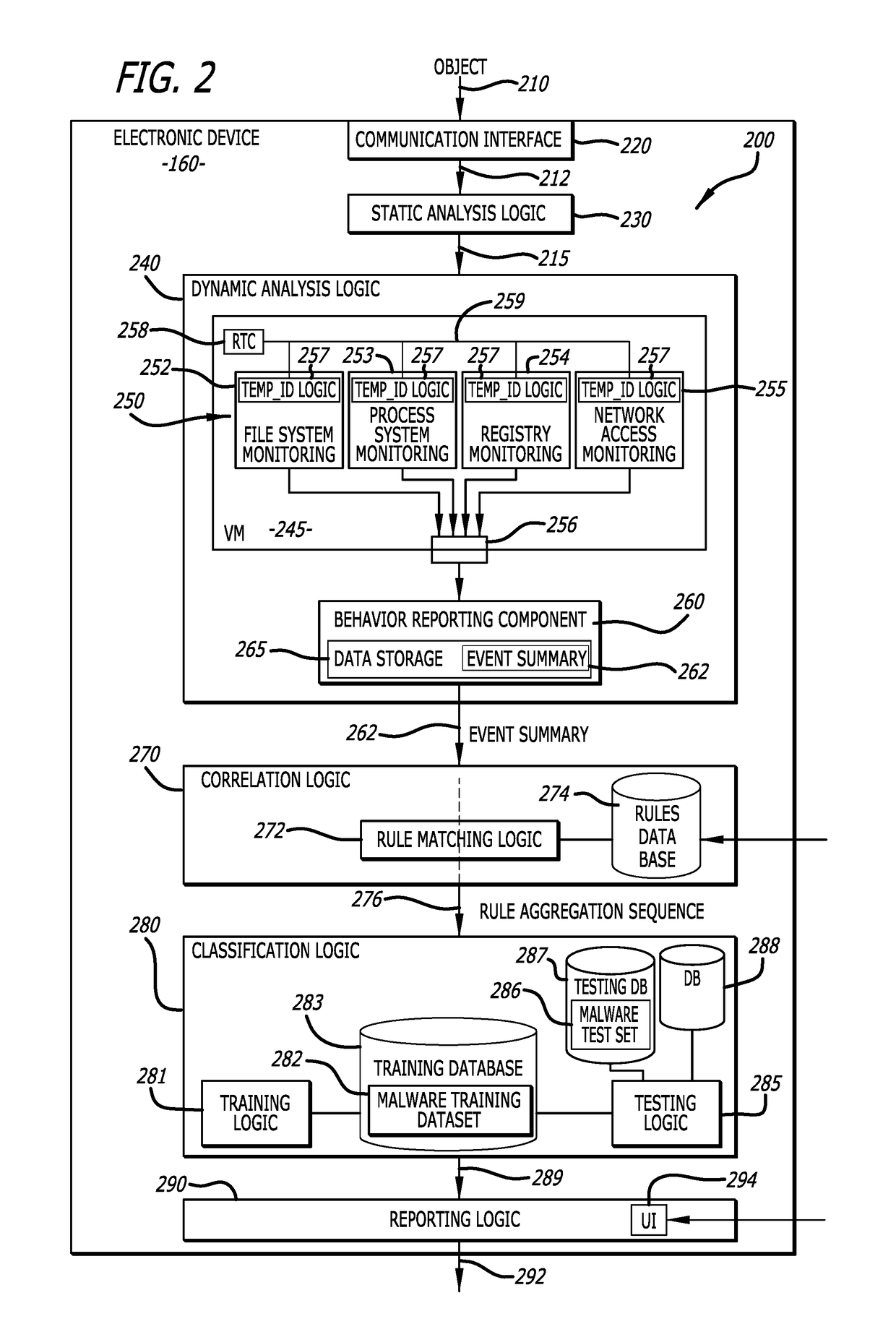Leveraging behavior-based rules for malware family classification
a behavior-based rule and malware technology, applied in the cyber security field, can solve the problems of adversely affecting the operability of malware, security vendors are faced with a substantial challenge in accurately classifying detected malware, and malware has become a pervasive problem
- Summary
- Abstract
- Description
- Claims
- Application Information
AI Technical Summary
Benefits of technology
Problems solved by technology
Method used
Image
Examples
Embodiment Construction
[0012]Various embodiments of the disclosure are directed to an electronic device, system and method for detecting and classifying malware. More specifically, one embodiment of the disclosure relates to logic that is configured to analyze and classify input data as part of a particular malware class based upon a detected sequence of rules triggered during processing of the input data. Herein, the input data is malicious as being associated with known malware or exhibiting behaviors that suggest that the input data includes malware (hereinafter referred to as a “malware sample”). The input data is processed and a particular behavior or a pattern of selected behaviors exhibited by the processed sample are monitored (hereinafter generally referred to as “monitored behaviors”). The monitored behaviors, which normally are a subset of the behaviors exhibited by the malware sample during processing, may be selected through the placement of interception points within one or more software com...
PUM
 Login to View More
Login to View More Abstract
Description
Claims
Application Information
 Login to View More
Login to View More - R&D
- Intellectual Property
- Life Sciences
- Materials
- Tech Scout
- Unparalleled Data Quality
- Higher Quality Content
- 60% Fewer Hallucinations
Browse by: Latest US Patents, China's latest patents, Technical Efficacy Thesaurus, Application Domain, Technology Topic, Popular Technical Reports.
© 2025 PatSnap. All rights reserved.Legal|Privacy policy|Modern Slavery Act Transparency Statement|Sitemap|About US| Contact US: help@patsnap.com



